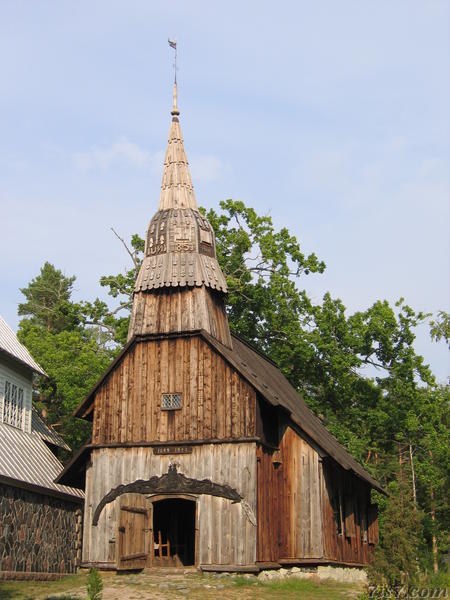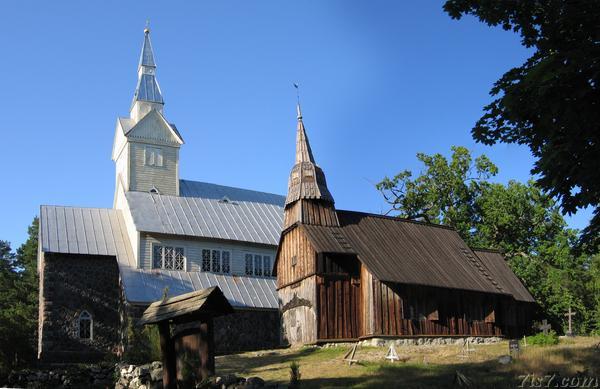Ruhnu Church
Ruhnu kirik
One of the main highlights of Ruhnu is the old wooden church which dates from 1644 and is one of the oldest remaining wooden churches in Europe.

Because the wooden church was becoming too small a new church was built in 1912 next to the old wooden church.

Until the Soviet occupation, Ruhnu was mainly inhabited by Estonian Swedes, who spoke their own Swedish dialect. When Soviet troops advanced into Estonia, all the residents of the island, with the exception of two families, fled to Sweden. They had made exact records of what they left behind in the hope of returning after the war. They were not allowed to return until 1991 when Estonia regained its independence. Properties have been returned to their former owners, but as the years have passed their descendants did not grow up on Ruhnu and only a few Estonian Swedes have returned. Currently there are only 60 residents on Ruhnu, while the pre-war population was around 300 people.
It remains a miracle that the wooden church survived 48 years of communist rule during which the new church was used as a storage house and the old one was apparently just ignored (fortunately, as it could just as well have been destroyed).
Location: 57°48'22"N 23°14'40"E on: Google Maps, OpenStreetMap, Maa Amet.
Copyright Otto de Voogd 2007


